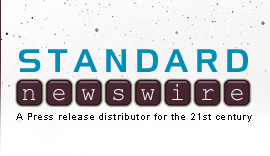Contact: Pam Kan-Rice, 510-987-0043, pamela.kan-rice@ucop.edu
Wildfirezone.org: Residents can get advice on what to do before, during and after a wildfire at wildfirezone.org. The Web site was developed by UC Cooperative Extension scientists in
The section titled "What to do during a fire" answers these questions: What about evacuating my family members and pets? How should I prepare my car? What should I take with me? How should I leave the inside of my home? How should I leave the outside of my home? What about the health of my family?
AsisTel de la UC: AsisTel de la UC, the phone-based information service of UC Division of Agriculture and Natural Resources, offers 25 concise messages in Spanish about dealing with the aftermath of wildfires. The messages are at 800-514-4494, a toll-free number. You can also read and hear the messages at http://ucanr.org/asistel/fires.
Topics include health concerns such as handling food safely when facing interruptions of power, smoke exposure and how to know if one's symptoms are smoke-related, and the health and emotional well-being of adults and children.
For those facing evacuation or relocating to a shelter, AsisTel de la UC includes information on steps that can make the process easier, as well as messages on protecting home and family from future fires.
Center for Fire Research and Outreach: A variety of resources are available via UC's fire center Web site: http://firecenter.berkeley.edu. Using the link to the Fire Information Engine Toolkit, homeowners can assess pre-fire hazard for their home, and get a customized "report card" with information on how to reduce hazards. The Homeowner Wildfire Assessment will also be available in Spanish at http://firecenter.berkeley.edu/homeassessment.
In addition, Californians can type in a specific address to see if they live in a region at risk for wildfires and obtain information about fires that have occurred in the area since 1950. CALFire's updated Fire Hazard Severity Zone maps are also available in an interactive, search-by-address web mapping site. Other tools include up-to-the-minute wildfire news, the locations of active fires in
"The toolkit provides immediate feedback that helps identify areas where people would get the biggest payoff in mitigation," said Max Moritz, UC Berkeley Cooperative Extension wildland fire specialist and lead researcher for the fire toolkit project.
SAFE Landscapes workshop: At SAFE Landscapes workshops, residents of the Santa Clarita Valley and the
The workshops are free, but registration is required.
The Santa Clarita Valley workshop will be Saturday, Nov. 3, 10 a.m. to 1 p.m. at Hart Park Hall in Newhall. To register for this workshop, go online to http://ucanr.org/safesc.
The Santa Monica Mountains workshop will be Saturday, Nov. 17, 10:30 a.m. to 1:30 p.m. at the Michael Landon Center at Malibu Bluffs Park in Malibu. To register for this workshop, go online to http://ucanr.org/safesm.
All participants will receive a copy of the SAFE Landscapes 2008 Calendar and Guidebook. For more information about the workshops, go to http://celosangeles.ucdavis.edu/Natural_Resources/Wildland_Fire.htm or contact Valerie Borel at 323-260-3851 or vtborel@ucdavis.edu.
Lake Tahoe "Angora Fire" workshop: In Northern
From 9 a.m. to 3 p.m. Saturday, Nov. 3, "The Angora Fire: What Will the Future Forest Be?" workshop will be held at Lake Tahoe Community College cafeteria, One College Drive, South Lake Tahoe. Presenters from UC Berkeley, U.S. Forest Service, Cal Fire and others will give an overview of forest ecology in the Tahoe Basin, describe the effects of the Angora Fire on the forest, present examples of what the Angora fire area will look like in 10, 20 and 50 years, and discuss the effects and effectiveness of different management strategies for restoring the Angora forests.
Register online at http://ceeldorado.ucdavis.edu. For information about registration, contact Nancy Starr, 530-621-5552 or nancy.starr@co.el-dorado.ca.us. For more information about the workshop, contact Kocher at 530-542-2571, skocher@nature.berkeley.edu.




 Sign Up to Receive Press Releases:
Sign Up to Receive Press Releases: